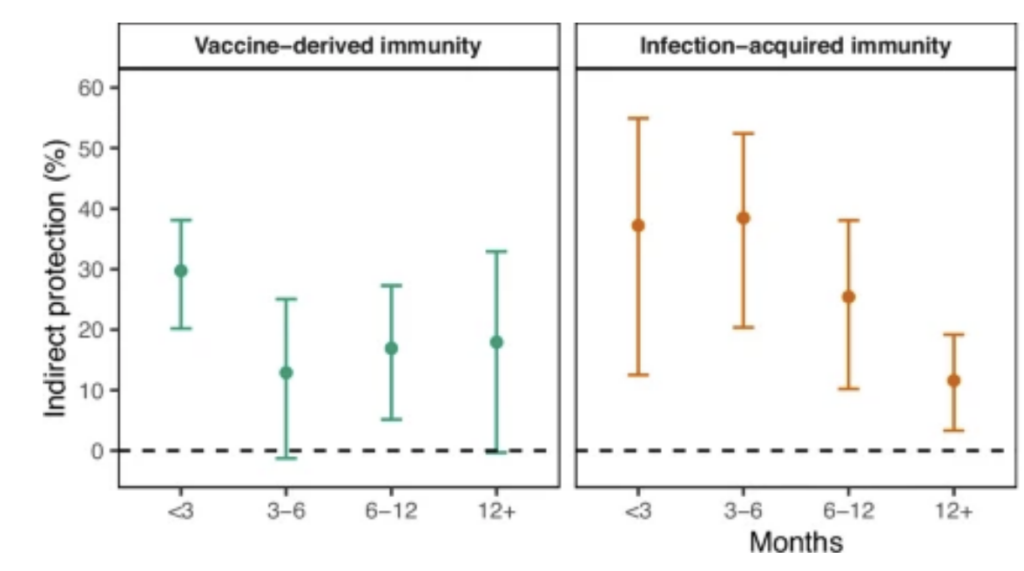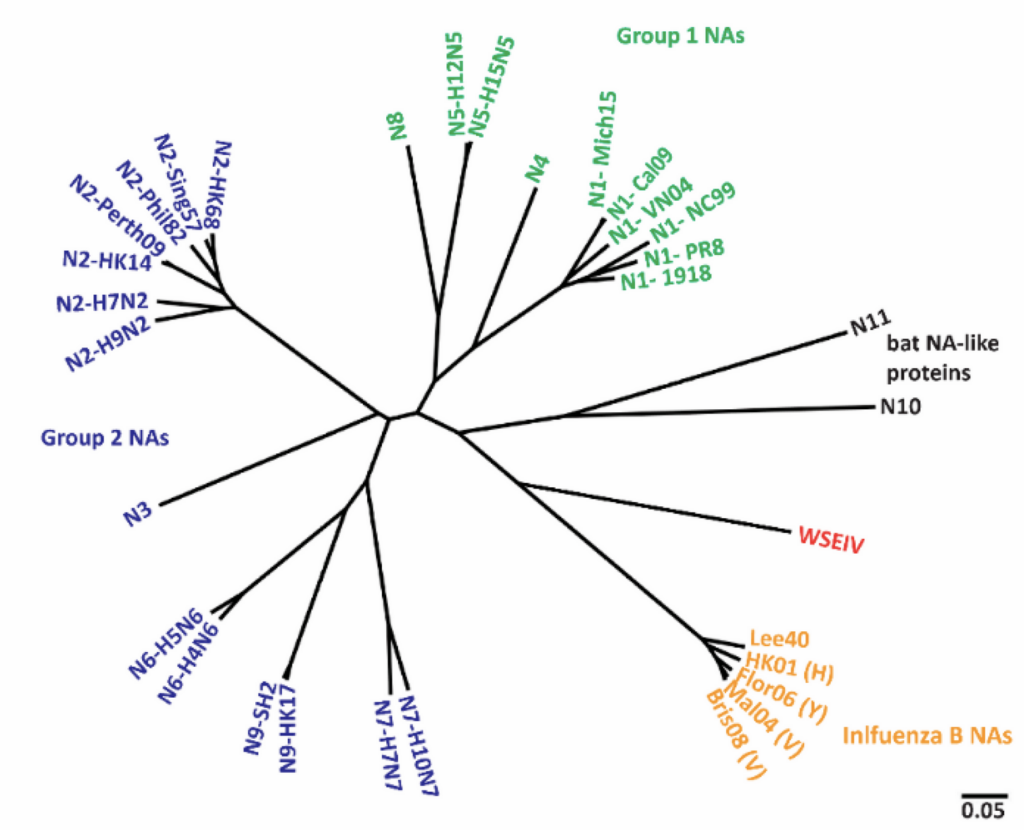It is still a little harder finding good articles / papers than a few weeks ago. In addition to all the chaff from Trump in the health sites I monitor, there are now a ton of news articles saying, “Today is the five year anniversary of the first COVID case appearing in <jurisdiction>, what have we learned?”
COVID-19
Long COVID
🎉🎉🎉 This paper from USA (2025-01-29) reports that 75% of ME/CFS patients had a remission for six weeks to six months after an infusion of remdesivir (a broad-spectrum antiviral commonly used to treat hospitalized COVID-19 patients)!
52% of ME/CFS patients treated with Paxlovid improved 🎉, but their remission only lasted days to weeks intead of weeks to months. 😞
🎉 This paper from USA (2024-12-30) found that injecting platelet-rich plasma into the noses of people who had COVID-induced loss of smell significantly improved their sense of smell. ⁉️ (No, I don’t know how you inject something into people’s noses. No, I don’t have any intuition at all as to why platelets might help.)
This paper from UK (2025-01-27) reports that patients who had been hospitalized with neurological COVID-19 symptoms had worse outcomes 13 to 16 months later than controls who were hospitalized with COVID-19 without neurological symptoms. Among their findings:
- the risk of impaired ability to perform activities of daily living was twice as high in those with neurological symptoms than those without.
- the risk of impacted ability to work was 2.5 times as high in those with neurological symptoms than those without;
- the risk of becoming unemployed was 2.3 times as high in those with neurological symptoms than those without;
- there was no difference in depression between the two groups;
- people with neurological symptoms who took either statins or angiotensin converting enzyme (ACE) inhibitors had a 91% lower risk of impairment. 🎉
This preprint (2025-01-27) reports that menstruation affected Long COVID slightly, and that hormonal contraception affected Long COVID even more. The non-bleeding menstruation stages had ~1-4% lower symptom scores, and about 5-10% fewer crashes.
Combined hormonal contraception made a much bigger difference. People on combined hormonal contraception had about 13% lower symptom scores and 40% fewer crashes.
Pregnancy didn’t seem to have any effect on crashes.
This paper from USA (2025-01-16) reports that taking vitamin D3 and vitamin K2 helps Long Covid. Long haulers who took D3/K2 had a decrease in their Long Covid symptom badness scores, while the placebo group had an increase.
Visible is a company which has a wearable device+app specifically designed to help people with energy-limiting diseases (like ME/CFS and Long COVID) to pace themselves. I don’t know how well it works — this is not a recommendation! — but it sure looks interesting.
This paper from USA (2025-01-28) reports that high white blood cell counts in blood taken from women ~25 years earlier (❗) correlated with the severity of Long COVID symptoms. High white blood cell counts did not, however, correlate with the likelihood of getting Long COVID, nor did it correlate with neurological symptoms.
The white blood counts test is really cheap and it is done often, so this could potentially be used as a biomarker.
😬 This paper from China (2025-01-25) reports that one year after being hospitalized with COVID-19, about a third of patients still had abnormal lung function, and 9.38% had pulmonary fibrosis and lower lung capacity.
🤔 This paper from Spain (2025-01-30) reports that nerves are different in healthy controls, people with Long COVID, and people with ME/CFS. The biggest difference between controls and people with Long COVID or ME/CFS was the tortuosity of corneal subbasal plexus nerve fibers as seen in confocal microscopes. (As far as I can tell, tortuosity is “funny curvature”.)
Long COVID patients also reacted more slowly to heat than healthy controls. (This seems like it would be a great, cheap diagnostic!)
COVID-Related Excess Death and Sickness
😬 This paper from UK (2025-01-30) reports that COVID-19 might increase the risk of Alzheimer’s. They found higher levels of β-amyloid in the blood of people who had COVID-19 infections compared to those who did not, and more in people who had been hospitalized. β-amyloid has been linked to Alzheimer’s.
😬 This paper from Germany (2025-01-30) reports that people with mild (i.e. not hospitalized) COVID-19 infections had noticeably poorer heart function than controls, although the damage was sub-clinical. That means they wouldn’t have known about it if they hadn’t gone looking.
I think the implication is that the people with COVID-19 infections would have less cardiac resilience later in life, e.g. (I’m guessing/making things up here!) having a heart attack two years earlier than you would have if you didn’t catch COVID.
Pathology
This paper from USA (2025-01-27) reports that the risk of hospitalization with COVID-19 is dropping to about the same as for influenza:
- In the winter of 2022-2023, the hospitalization rate was similar for COVID-19 and influenza was almost identical (16.2% vs. 16.3%, respectively). However, the 30-day mortality rate was higher for COVID-19 (1.0%) than for influenza (0.7%). RSV hospitalization was lower (14.3%) and mortality was the same as influenza (RSV (0.7%).
- In the winter of 2023-2024, the 30-day mortality risk was about the same for COVID-19, influenza, and RSV. 🎉
- However, the 180-day mortality risk was higher for COVID-19 than for influenza or RSV in both 2022-23 and 2023-24. 😞💀
- For people who got a vaccine for both COVID-19 and influenza in the preceding year, there was no mortality difference in any time period. 🎉
AGAIN This paper from Denmark (2025-01-29) reports that COVID-19 is not the flu. They found that:
- The number of deaths was more than three times higher for people who were hospitalized with COVID-19 than those hospitalized for influenza. 😞 😞💀💀💀 (There were more deaths mostly because of more cases.)
- In the winter, the risk of death was 23% higher for people who were hospitalized with COVID-19 than those hospitalized for influenza. 😞💀
- In the winter, among hospitalized people who didn’t have either COVID-19 or influenza vaccines, the risk of death was 36% higher for COVID-19 patients than influenza patients. 😞😞💀
- In the winter, hospitalized men were 36% more likely to die from COVID-19 than from influenza. 😞💀
AGAIN This paper from Switzerland (2025-01-26) reports that the risk of developing some new disease is about doubled after getting COVID-19.
😬 This paper from USA (2025-01-17) reports that people with ME/CFS are 3.25 times more likely to get cardiovascular disease (CVD), after adjusting for known CVD risk factors.
This paper from Australia (2025-01-28) reports that most (but not all) people with postural orthostatic tachycardia syndrome (POTS) had a significant undersupply of oxygen to the brain (mostly to the pre-frontal and sensorimotor regions). Most of the people who had POTS were able to identify the trigger — frequently it was a mild case of COVID-19, but it was also triggered by brain injury, non-COVID infections, (rarely) vaccination, (rarely) surgery, and even (rarely) pregnancy. Interestingly, there was no difference in triggers between the cohort with normal cerebral blood flow (CBF) and those with abnormal CBF.
AGAIN This paper from Australia (2025-01-13) reports that brain scans of Long COVID (LC) patients and ME/CFS patients look different from those of healthy controls. LC and ME/CFS patients had higher volumes than controls in various places in the brain — the left subiculum head, presubiculum head, molecular layer hippocampus head, and whole hippocampal head — but the LC and ME/CFS patients had similar measurements.
This paper from USA (2025-01-28) reports that there are some distinct subtypes of MIS-C.
- mostly respiratory symptoms (8.0%), mostly affecting older children, with cough, shortness of breath, pneumonia, chest pain or tightness, and acute respiratory distress syndrome;
- shock, myocarditis or pericarditis and cardiac dysfunction on echocardiography, and more hematologic, gastrointestinal, kidney, and neurologic involvement (37.6%);
The “everything else” bucket was large (54.5%) and had mostly younger children, with slightly higher rate of rash and conjunctivitis than in the other subtypes.
The highest death rate was in the respiratory group (4.6%), even though the shock/cardio group was admitted to the ICU more often (82.3%!). Only 4.3% of the deaths were from the “everything else” bucket. 😞💀
This paper from Brazil (2025-01-27) looked at patients who had a new onset of a neurological disease (e.g. encephalopathy, myelitis, etc.) up to sixty days after a COVID-19 infection. They found:
- the median time from COVID-19 to onset of neurological symptoms was 14 days❗;
- patients were 10 times more likely to die and 38 times more likely to be hospitalized than other COVID-19 patients 😞💀;
- patients who had vascular syndromes (which I think means strokes?) were 3 times more likely to require ICU and 4 times more likely to die than patients who had vascular syndromes that did not come from COVID-19 😞💀;
- the severity of the symptoms was not related to how severe the acute COVID-19 infection was.
Transmission
🎉 This paper from USA (2025-01-29) reports that vaccines are helpful not just for the person who gets the vaccine, but also for their close contacts. They looked at how often prisoners got sick during the early Omicron wave if their cellmates got some immunity from a vaccination, got immunity from an infection, or didn’t have vax- or infection-based immunity. From that, they calculated effectiveness against their cellmate getting sick:
- a monovalent vaccination was about 30% effective at preventing a cellmate’s illness for the first three months, and then is only “moderately” effective after that;
- an infection was about 38% effective at preventing a cellmate’s illness for the first six months, with “moderate” protection up to one year;
- bivalent vaccinations were about 40% effective at preventing a cellmate’s illness for at least three months;
- hybrid immunity (both vax and infection) was about 36% effective at preventing a cellmate’s illness (no information on for how long).

Vaccines
🎉 This older paper from USA (2022-02-09) reports that 90 minutes of light/moderate exercise immediately after getting an immunization can boost antibody levels without causing more/worse side effects! This was true for COVID-19 (Pfizer), H1N1, and seasonal influenza shots, and based on a comparison with controls who did not do the immediate exercise. Note that the exercisers and the no-exercise control group were all people who exercised regularly.
And a reminder that this paper from UK (2021-12-04) says you should get vaccinated in the morning.
I once said that this paper from USA (2024-01-16) showed that you should switch which arm you get vaccinated in. However, since then, I found this paper from Germany (2023-08-11) which says that same-arm vaccination was slightly better!
Mitigation Measures
😞 This paper from UK (2025-01-30) reports that using portable air cleaners and/or upping the ventilation can have unintended consequences. They found that both can cause particles in other rooms to go up. Basically, the output of a big portable air cleaner can push particles that have not gone through the cleaner farther away.
I think what that means is that you have to have an air cleaner in the “other” room as well as in the “first” room.
Bird Flu
Transmission
I have to start calling this section “Bird Flu” instead of “H5N1” because this article (2025-01-27) says that the USA has found its first case of H5N9, at a poultry farm in California. 😢 (They also had some H5N1 at that farm. Maybe they are working on collecting the whole set.)
I’ve heard people express concern about having H5N9 and H5N1 on the farm at the same time is that the two could recombine and make a novel strain. Now, I think that mixing an H5 and and H5 shouldn’t be a big deal; the big deal would be combining the N9 with the N1.
Note that according to this paper (2022-09-14), the hemagglutinin (the H in H5N1) part of influenza is involved in getting into the cell and the neuraminidase (N) part is involved in getting out. (That means that antibodies against the N part aren’t technically neutralizing, because they don’t stop the little bugger from getting into the cell, but the N part has been used as a target for antiviral drugs.)
I looked for information about what other Ns the N9 was related to, and found this chart from this paper (2021-08-02):

If I understand this graph properly, N9 is closely related to N6 (sibling) and N7 (child), but not that closely related to any of the others. (See my older post (2025-01-03) for a similar chart for the Hs. Refresher: H5 is sort of close to H2 and H1, but not H3.)
😞 This article (2025-01-31) says that the US is up to 951 total infected dairy herds (cumulative), with 734 in California.
🤔 This article (2025-01-29) talks about why egg prices in Canada haven’t skyrocketed like in the USA. Farms in Canada are much smaller. The above article says that Canadian poultry farms have an average of 25,000 hens per farm, while this article (2023-01-26) says that the typical US egg farm has between 50,000 and four million hens; this undated article from the USDA says that flocks with more than 30,000 layers account for over 81 percent of all layers; this article mentions that an infected Indiana plant has 2.8 million hens!
That means that Canada doesn’t get the same economies of scale that the USA does, so eggs are usually more expensive here, but Canada is more resilient: losing one entire flock to a cull isn’t as a large percentage of the total hens.
Mpox
Pathology
😬💀 This paper (2025-01-29) reports that the case fatality rate in DR Congo of Clade 1b mpox for this outbreak is 3.1%.

1 comment
Comments are closed.